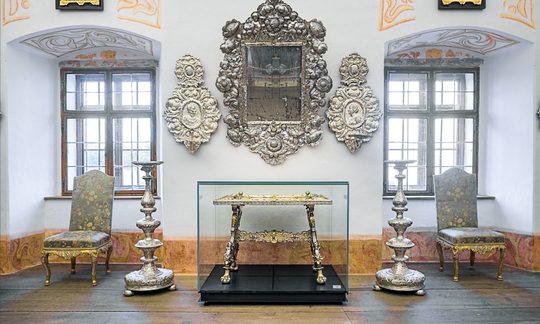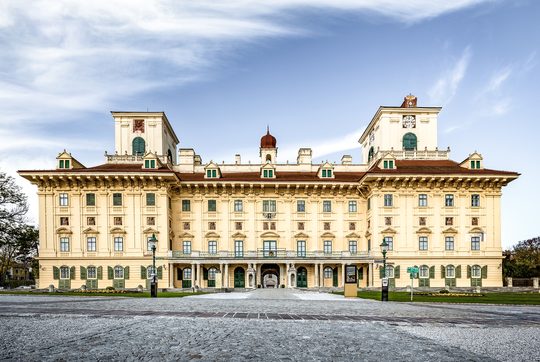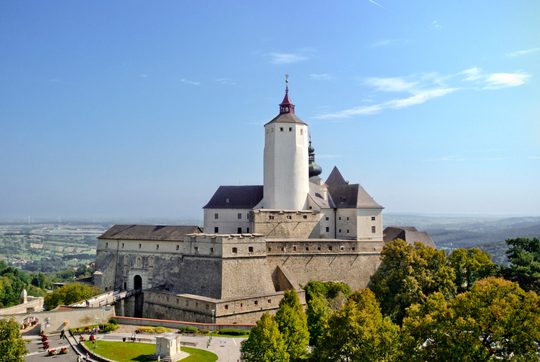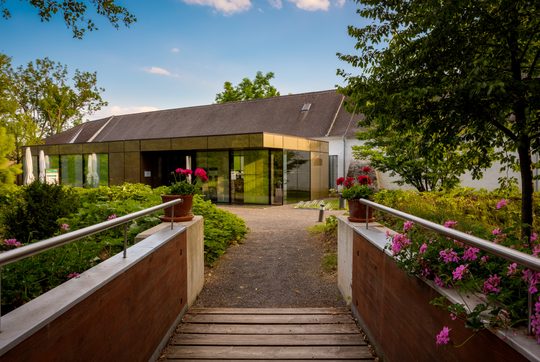Heroes - Treasures - Loot

These portraits served to accentuate the status and dignity of the upwardly mobile princely dynasty, hence it adopted such “legendary” ancestors as the Walachian Prince Vlad III Tepes – inspiration for Bram Stoker’s “Dracula”, while Attila the Hun and Charlemagne also found their way into the family tree.
The life-size portraits with their resplendent robes and precious gems also give us a vivid impression of the history of Hungarian costume and jewellery. They are shown in a setting of magnificent Baroque ceremonial furniture and precious objects from the treasure chamber. The highlight is a room decked out with Baroque silver furniture, including the ceremonial table of 1656 by David Schwestermüller.
With its clocks, candleholders and mirrors, it is one of the largest and oldest collections of silver furniture in Europe. The fact that it was presented in Versailles Palace in winter 2007/8 together with exhibits from other royal collections of Europe serves to underline its status in the history of art.
Princely Tally-ho! – Hunting at the Esterházy Court
A show in the princes’ former residential quarters and summer banquet hall now reserved for special exhibitions houses the exhibition “Princely Tally-ho!” showing four hundred years of Esterházy hunting tradition. It offers visitors an inside view into the most diverse aspects of hunting and includes depictions of various forms of the chase practised by the nobility, the Esterházys’ hunting weapons, the big-game hunting of Prince Louis abroad, uniforms, porcelain depicting hunting motifs and, last but certainly not least, an eighteenth-century painting nearly ten feet by twenty-three feet showing the Eisenstadt Zoological Gardens.





